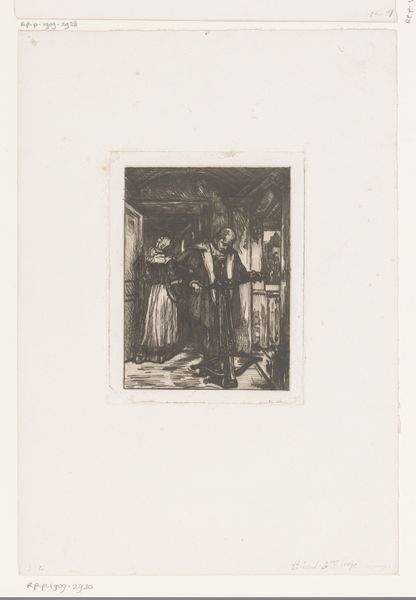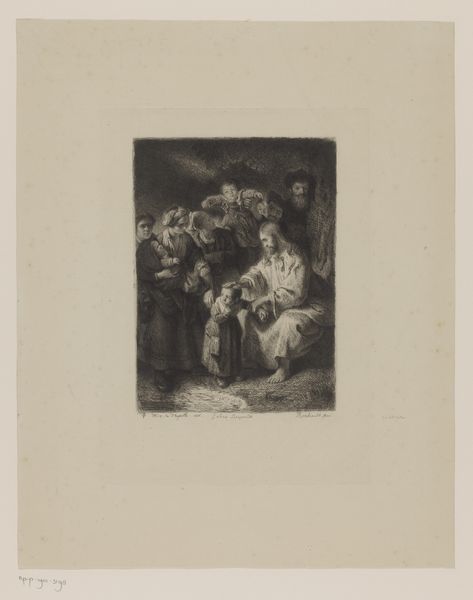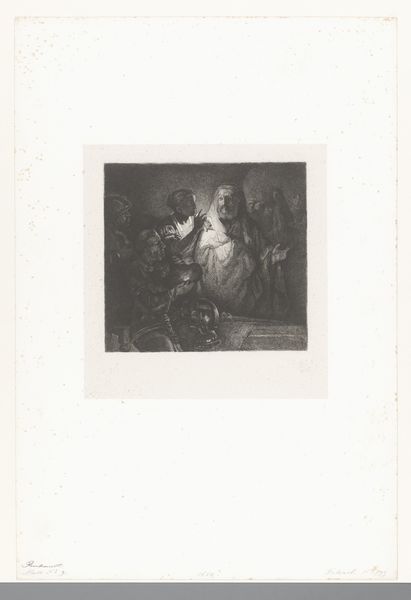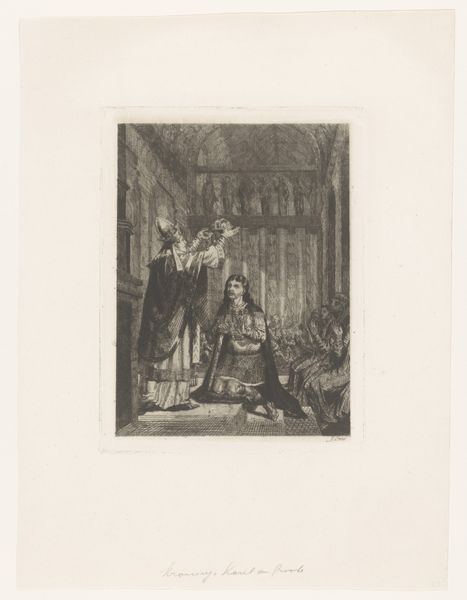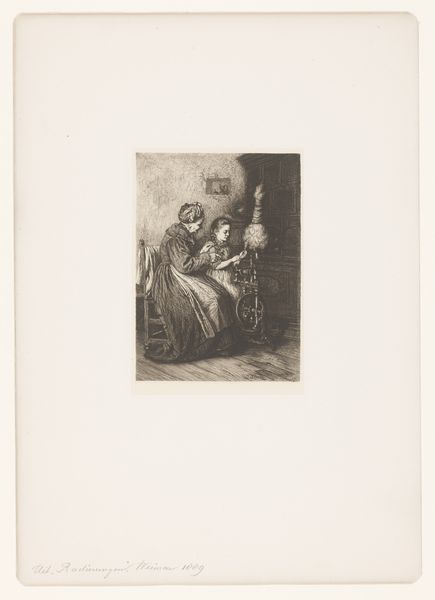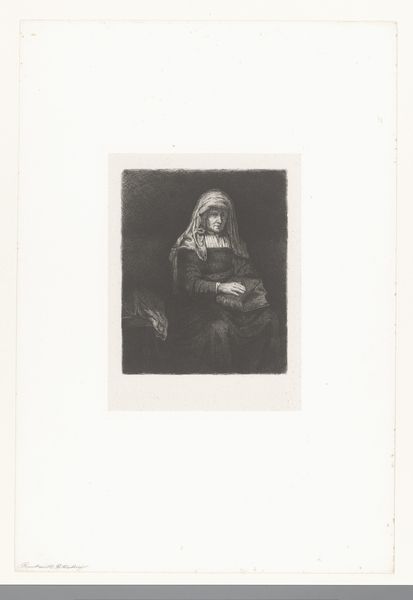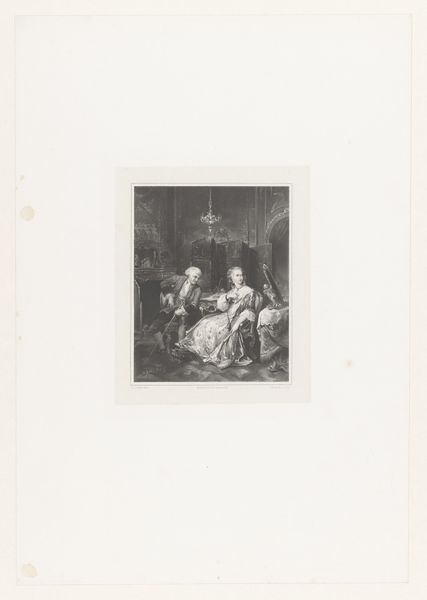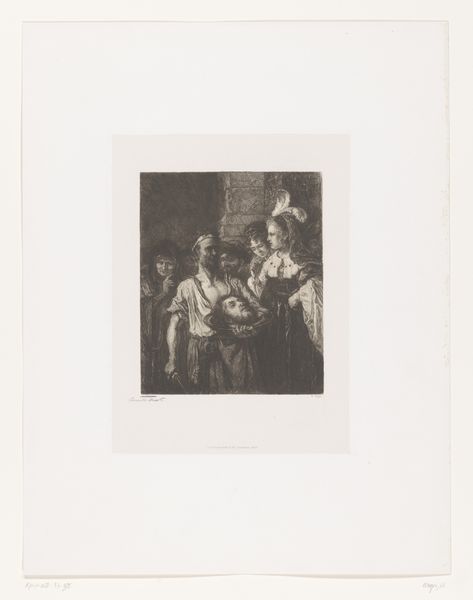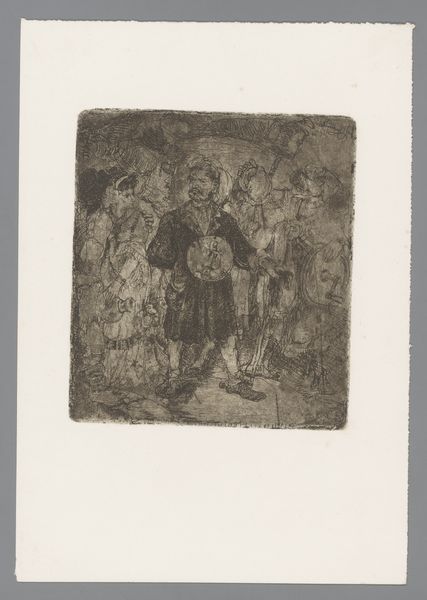
Dimensions: height 275 mm, width 199 mm
Copyright: Rijks Museum: Open Domain
Curator: I am immediately drawn into the profound drama captured in this print. There's such a stark contrast of light and shadow. Editor: Indeed. We’re looking at an artwork titled “Terugkeer van de verloren zoon,” which translates to “Return of the Prodigal Son." It’s attributed to Nikolay Semyonovich Mosolov and estimated to have been created between 1857 and 1914. It is crafted using engraving and etching techniques, revealing an interesting approach to depth. Curator: The story of the prodigal son is deeply embedded in religious teachings and artistic tradition. This historical narrative obviously explores universal themes of repentance, forgiveness, and familial love. Considering the period when it was made, do you think there were specific cultural interpretations the artist was exploring? Editor: Undeniably. The artist’s focus is certainly less on the son's reckless past, and more on the father’s unconditional acceptance. Note how the central figure of the father nearly disappears into the shadows, yet, the lines that suggest his touch around the son is more firm. Perhaps a quiet meditation on patriarchal benevolence and acceptance. Curator: The composition strikes me as almost theatrical. Notice how the surrounding figures seem to peer out of the darkness, almost as if they are a Greek chorus observing the unfolding scene. It suggests the idea of judgement and the role of the community. Editor: That’s interesting, the figures could either be judgemental figures or supportive bystanders. Either way, Mosolov's technique contributes much to its dramatic impact; the textures, obtained via the specific use of the engraving, add depth and richness. The details in their faces create such tangible emotions of tenderness in the father and exhaustion and relief in the son. Curator: Absolutely. By employing stark chiaroscuro, Mosolov directs our eyes precisely to where he wants us to focus, amplifying the intensity of the narrative. It would be great to know if the piece gained notoriety within any reform movements? Editor: It would be compelling to research more about its role as it reflects cultural attitudes of its time. The play of light itself serves not just as aesthetic strategy, but really enhances the overall symbolic dimension. Curator: Agreed. Overall, the use of black and white heightens the timeless message embedded within the Biblical narrative. Editor: And prompts us to reconsider the formal and thematic layers of redemption.
Comments
No comments
Be the first to comment and join the conversation on the ultimate creative platform.
